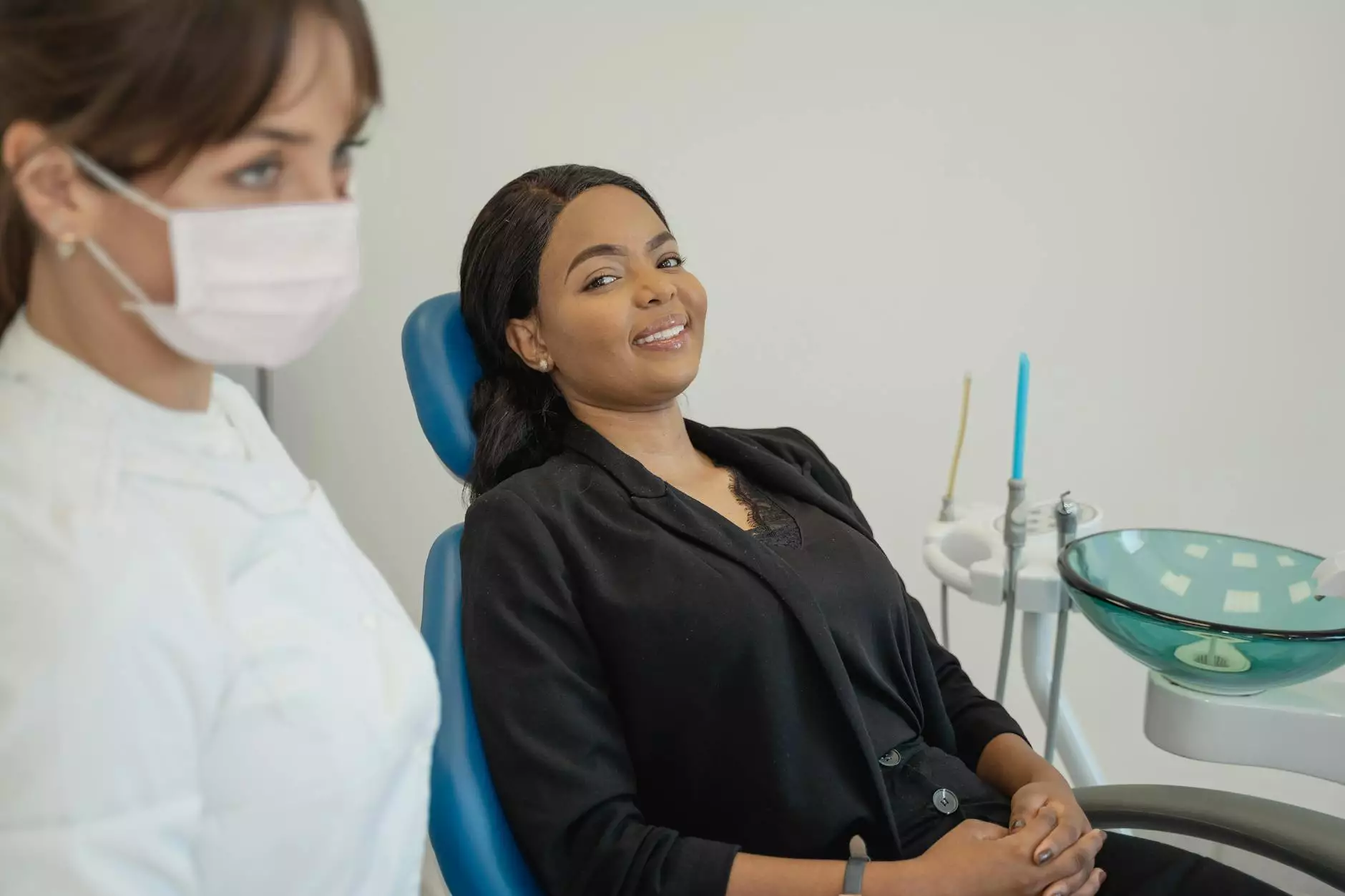Understanding Blood Clots in the Calf: Causes, Symptoms, Diagnosis, and Effective Treatment

Blood clots in the calf are a clinical concern that demands prompt attention and expert medical intervention. They can pose serious health risks including pulmonary embolism if not diagnosed and managed efficiently. This comprehensive guide aims to illuminate every critical aspect of this condition, empowering readers with knowledge on how to recognize symptoms, seek appropriate medical care, and understand the latest advancements in vascular medicine.
What Are Blood Clots in the Calf?
Blood clots in the calf refer to the formation of a thrombus, a solid mass of coagulated blood, within the deep veins of the lower leg. These clots typically develop in the deep veins, known as Deep Vein Thrombosis (DVT), and can vary in size from small to large. The calf is a common site for DVT because of the venous structure, blood flow dynamics, and potential for venous stasis.
Why Are Blood Clots in the Calf a Major Health Concern?
Though some blood clots in the calf may resolve spontaneously without causing harm, they can also be a precursor to serious complications such as pulmonary embolism. When part of the clot dislodges and travels to the lungs, it can obstruct blood flow, leading to life-threatening situations. Therefore, early detection and targeted treatment are essential to prevent these adverse events and preserve vascular health.
Causes and Risk Factors for Developing Blood Clots in the Calf
The development of blood clots in the calf is multifactorial. Recognizing the underlying causes is crucial to both prevention and management:
- Venous stasis: Reduced blood flow due to prolonged immobility, bed rest, or immobilization following surgery or injury.
- Hypercoagulability: Increased blood clotting tendency caused by genetic disorders, certain medications, or underlying health conditions like cancer.
- Vascular injury: Damage to vein walls from trauma, surgery, or invasive procedures increases the risk of clot formation.
- Other factors: Obesity, pregnancy, age (especially over 60), smoking, hormonal therapy, and chronic medical conditions like heart or lung disease.
Recognizing Symptoms of Blood Clots in the Calf
Early recognition of symptoms is pivotal in timely intervention. Common signs and symptoms include:
- Swelling: Noticeable swelling usually localized to one calf, often persistent and progressive.
- Pain or tenderness: Discomfort that may feel like cramping, aching, or a heavy sensation, especially when standing or walking.
- changes in skin color: Redness, warmth, or discoloration around the affected area.
- Surface veins: Visible surface veins may appear distended or more prominent.
- Other symptoms: Sometimes, no symptoms are present, emphasizing the significance of risk assessments by healthcare providers.
Diagnosing Blood Clots in the Calf: Modern Approaches
Accurate diagnosis of blood clots in the calf involves a combination of clinical assessment and advanced imaging techniques:
- Doppler Ultrasound: The gold standard non-invasive test that assesses blood flow and detects thrombi within deep veins.
- Venography: An invasive imaging procedure involving contrast dye to visualize veins, reserved for ambiguous cases.
- Blood Tests: D-dimer testing to assess clot presence, though a positive test alone does not confirm DVT without supporting imaging.
Proper diagnosis by experienced vascular medicine specialists ensures prompt and precise treatment planning, critical to preventing complications.
Comprehensive Treatment Strategies for Blood Clots in the Calf
Effective management of blood clots in the calf hinges on the severity of the thrombus, patient-specific factors, and overall vascular health. Modern treatment focuses on clot dissolution, preventing recurrence, and safeguarding pulmonary health.
Anticoagulation Therapy
Most patients require anticoagulants, commonly known as blood thinners, to inhibit further clot growth and embolization:
- Heparin: Often administered intravenously or subcutaneously for immediate effect.
- Warfarin or Novel Oral Anticoagulants (NOACs): Such as rivaroxaban, apixaban, or dabigatran for ongoing management.
In addition to medication, regular monitoring ensures therapeutic effectiveness while minimizing bleeding risks.
Catheter-Directed Thrombolysis
In select cases with extensive or obstructive thrombi, minimally invasive procedures may be employed to dissolve clots directly, reducing long-term complications like post-thrombotic syndrome (PTS).
Compression Therapy
Wearing graduated compression stockings can alleviate symptoms, reduce swelling, and promote venous return, playing a supportive role in treatment and prevention.
Surgical Interventions
In rare instances where other treatments are ineffective, surgical removal of the clot (thrombectomy) may be indicated, especially with concerns about limb ischemia or recurrent thrombosis.
The Role of Vascular Medicine in Managing Blood Clots
Specialists in vascular medicine are equipped with the knowledge and advanced techniques to diagnose and treat blood clots in the calf. Their expertise ensures personalized treatment plans, monitoring, and prevention strategies aligned with the latest research and innovations.
At Truffle Vein Specialists, we focus on providing comprehensive vascular healthcare tailored to each patient's unique needs. Our team of experienced doctors employs cutting-edge diagnostics and minimally invasive treatments to ensure optimal outcomes and improve vascular health.
Prevention of Blood Clots in the Calf: Tips and Lifestyle Modifications
Preventive measures are crucial, especially for individuals with risk factors. Key recommendations include:
- Stay active: Regular movement and exercise to promote healthy blood flow.
- Avoid prolonged immobility: Take breaks during long flights or car journeys—stand, stretch, and walk when possible.
- Maintain a healthy weight: Obesity increases venous pressure and clot risk.
- Manage underlying conditions: Properly control hypertension, diabetes, or hypercholesterolemia.
- Quit smoking: Smoking damages vessel walls and promotes clot formation.
- Medication adherence: Take prescribed anticoagulants as directed if at high risk or with prior thrombotic events.
The Significance of Timely Medical Intervention in Blood Clots
Delay in managing blood clots in the calf can lead to severe complications, including pulmonary embolism, chronic venous insufficiency, or post-thrombotic syndrome. Recognizing symptoms early and seeking expert vascular care significantly improves prognosis and minimizes long-term damage.
Innovations and Future Directions in Vascular Medicine
The field of vascular medicine continues to evolve with breakthroughs such as:
- Better anticoagulants: Safer, more effective medications with fewer side effects.
- Advances in imaging: High-resolution vascular imaging that enables earlier and more accurate diagnosis.
- Minimally invasive procedures: Laser thrombectomy and advanced catheter therapies.
- Genetic research: Identifying genetic predispositions to thrombotic conditions to enable personalized prevention strategies.
Leveraging these innovations, healthcare providers can ensure patients benefit from cutting-edge care and achieve optimal vascular health outcomes.
Conclusion: Take Charge of Your Vascular Health Today
Understanding the complexities of blood clots in the calf is vital for effective prevention and treatment. Whether you are at high risk or experiencing symptoms, consulting with experienced vascular medicine specialists is your best step toward safeguarding your health. Early diagnosis, modern therapies, and lifestyle modifications form the foundation for successful management and long-term vascular wellness.
At Truffle Vein Specialists, we are committed to providing superior vascular care with personalized attention and the latest technological advancements. Don’t wait—if you suspect blood clots in the calf, schedule a consultation today to protect your health and ensure your mobility and vitality are preserved for years to come.
blood clot in calf








